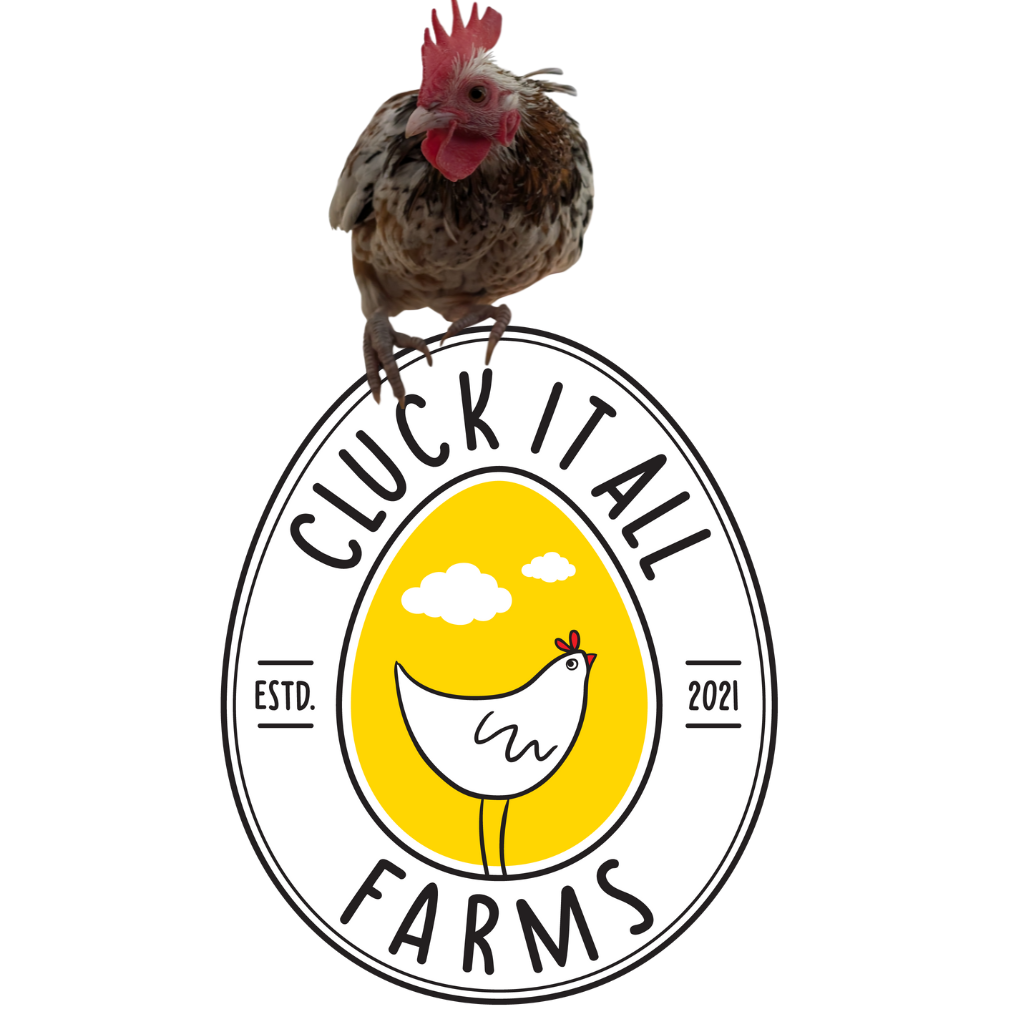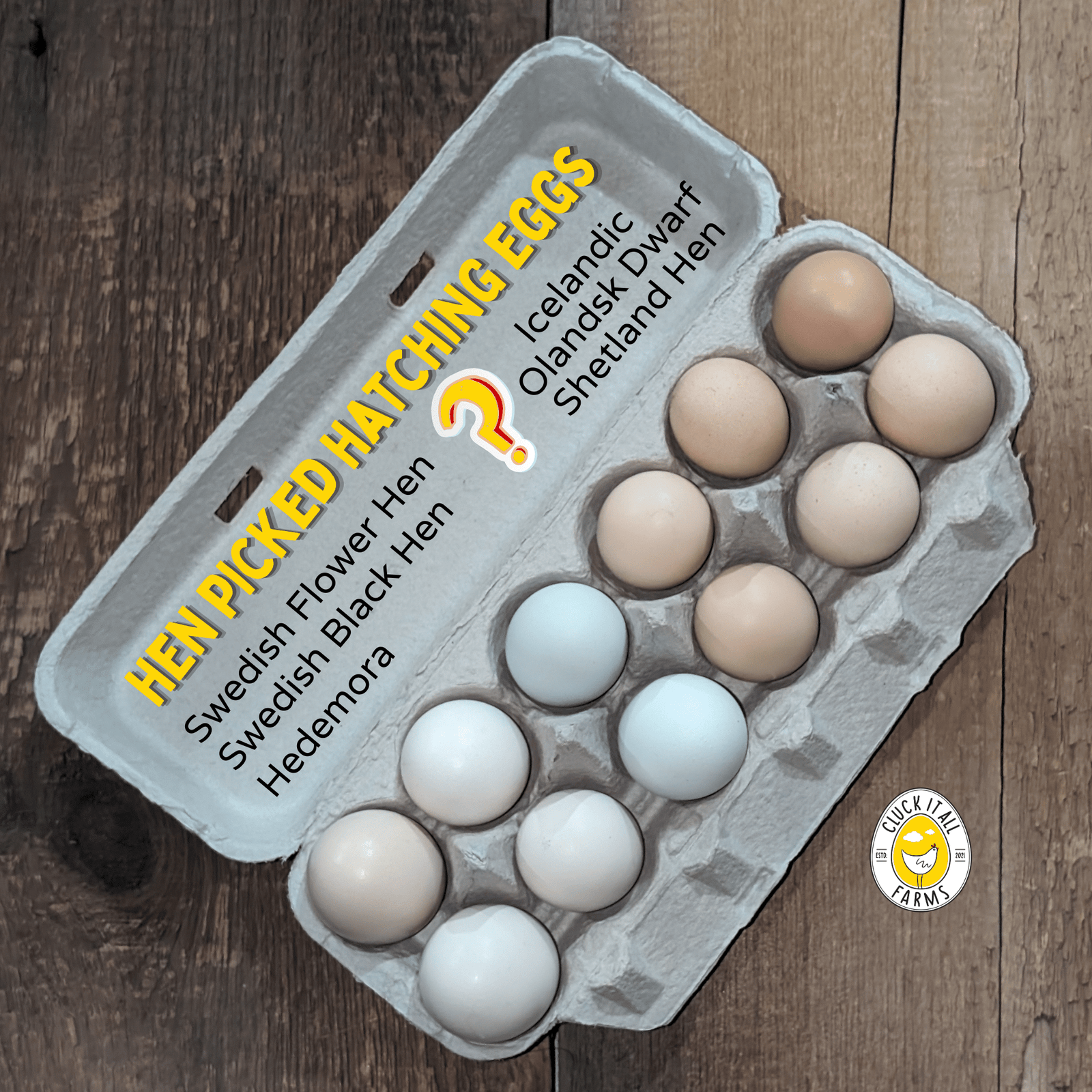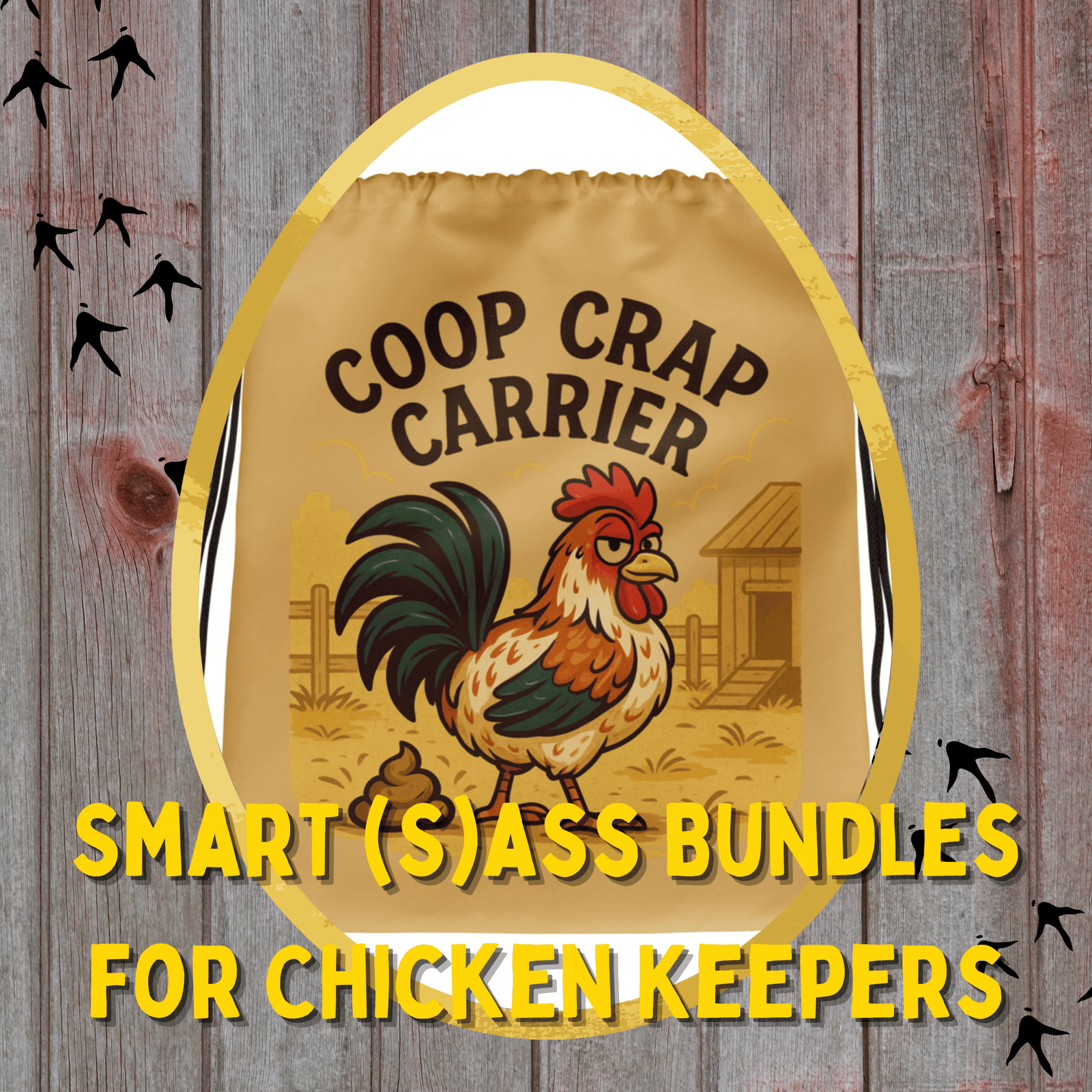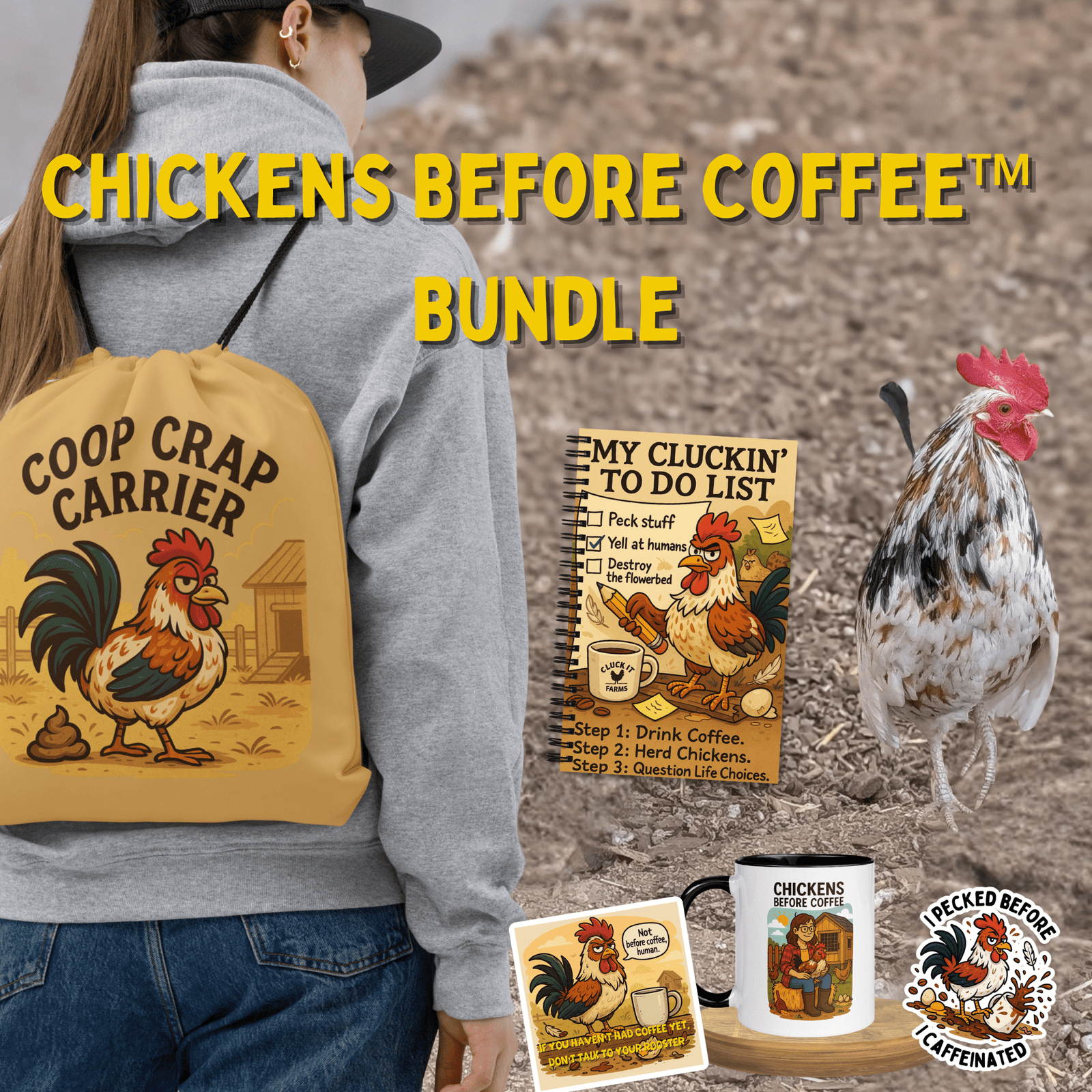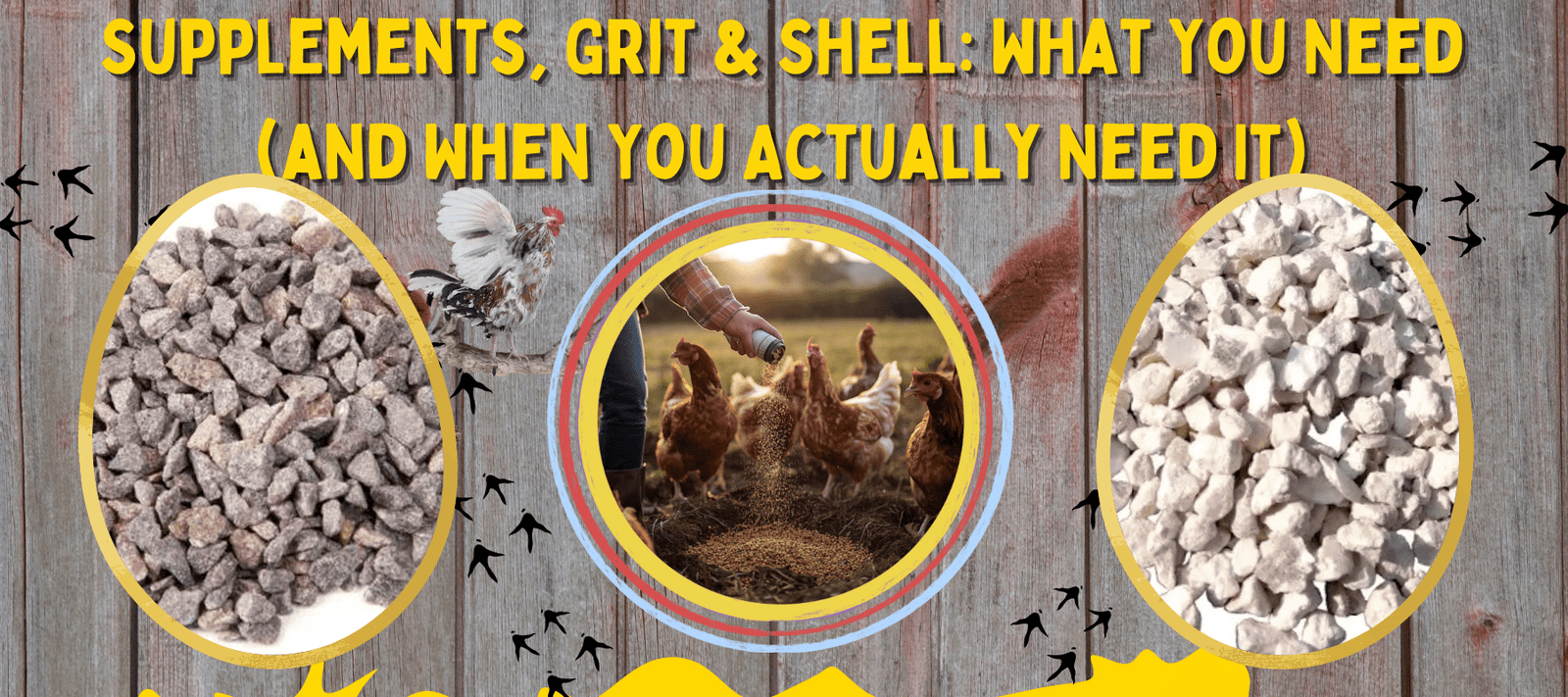If Lisa Frank designed a chicken, we’re pretty sure it would be a Swedish Flower Hen.
These speckled wonders didn’t hatch out of a Pinterest mood board, though—they’re the product of centuries of natural selection in the harsh climate of southern Sweden. Hardy, beautiful, alert, and friendly-but-not-pathetic, Flower Hens are landrace birds that have survived not by following a standard, but by flipping it the cluck off.
Today, we raise them not for show trophies, but for survival. These are the glitter bombs of the landrace world, and here at Cluck It All Farms, we’re not just preserving the genetics. We’re preserving the attitude.
🌿 What Is a Swedish Flower Hen, Exactly?
Also known as Skånsk Blommehöna in their homeland, Swedish Flower Hens are a landrace chicken that developed organically in the southern region of Skåne, Sweden. Unlike industrial or show breeds, landraces aren’t built to meet human-imposed visual standards. They’re built to thrive,by adapting naturally to the region, weather, predators, and diseases around them.
Gene Bank Facts (via Svenska Lantrasföreningen):
-
First recognized as a genetically valuable landrace in the late 1990s
-
DNA testing confirmed a high degree of genetic diversity
-
Three main village lines were identified: Esarp, Tofta, and Vomb
-
Accepted into the Swedish National Gene Bank for poultry in 2001
-
Purpose of conservation: preserve both utility and biodiversity, not uniformity
So if you’ve ever seen one Flower Hen and assumed you’ve seen them all? Oh honey. You’re gonna want to sit down for this.
🎨 Why They Look Like a Barnyard Art Project (in the Best Way)
Swedish Flower Hens are not standardized. That means no two look the same, and that’s the point.
You'll see:
-
Mottling in black, white, blue, or red-brown
-
Classic “flower” speckles as they mature (especially on darker plumage)
-
Some with crests, some without (both are natural, neither is “correct” or preferred)
-
Clean legs, large single combs, expressive eyes, and a posture that says, “I run this coop now”
And yes, some look like actual art. Others look like they got into the glitter bin after six espressos. That’s Flower Hen life.
🧬 A Note on Crests: Just Because You Can Doesn’t Mean You Should
Some Swedish Flower Hens come with fabulous feather crowns that make them look like they moonlight as backup dancers in a glam rock band.
And that’s fine, if it happens naturally.
But here’s what the Swedish Gene Bank wants you to know:
Never breed a crested hen to a crested rooster. Ever.
Birds that inherit two copies of the crest gene often develop:
-
Oversized crests
-
Impaired vision
-
Higher risk of injury, stress, and poor environmental awareness

At Cluck It All Farms, we take this seriously.
We do not keep crested roosters in our breeding pens, only crested hens. That way, we preserve the natural variety without risking birds who can’t see well enough to survive.
Crests are part of the breed variation, not the goal. At Cluck It All Farms, we follow preservation guidelines closely, no crest-to-crest pairings, period. Our job is to keep these birds functional, balanced, and sharp-eyed (even if they still give you side-eye).
🧬 Why We Breed Them (And Why It’s Not for Instagram Likes)
We don’t breed for uniformity. We breed to preserve genetic diversity. Swedish Flower Hens weren’t engineered in a showroom, they were shaped by generations of surviving southern Sweden’s tough climate with zero pampering.
These birds carry traits that make them:
-
Cold-hardy (excellent for northern climates)
-
Forage-savvy (pasture powerhouses)
-
Self-sufficient (low incidence of health problems)
-
Emotionally balanced (independent, but not skittish)
They’re dual-purpose, with bodies built for both beauty and productivity:
-
Hens average 4.5–5.5 lbs
-
Roosters run 6.5–8 lbs
-
Egg count: 150–200+ per year
-
Egg color: Cream to light brown
No, they’re not the best layers on the block, but they’re consistent, reliable, and way more stylish than your basic buff anything. Some lines even lay longer into the off-season thanks to their hardy genetics.
And while they aren’t lap chickens, they’re naturally confident, alert, and curious. Think barnyard gossip, not barnyard drama.
Their looks might draw attention, but what they really offer is resilience,birds built by natural selection, not show standards. They're living proof that you don’t have to match to matter. The nonconformist queens of the poultry world.
🐣 Life With Swedish Flower Hens (Or, Why They Might Yell at You)
They’re curious. They’re alert. They will follow you around if they think snacks are involved, and yell at you if snacks are not produced in a timely manner.
They’re not lap chickens, but they’re friendly and confident. You’ll get side-eye, not pecked.
Their laying is respectable:
-
~150–200 eggs per year
-
Cream to tinted brown shells
-
Some variation by line
And while they’re not likely to win a broody hen bake-off, they will occasionally go broody. just long enough to surprise you, but not long enough to be reliable.
🐔 Meet Chet: The Hen With a Rooster’s Energy
Ah yes. Chet.
Chet started her life here at Cluck It All Farms as a chick we were certain was a little cockerel. She strutted. She postured. She had “rooster in training” energy, and a face that said, “Don’t you dare.”
But plot twist? Chet’s was a pullet. And not just any pullet, she’s the kind that perches on your shoulder like a pirate’s parrot and supervises everything you do with judgmental precision.
Her story’s so good, she has her own blog post. But we included her here as proof that Swedish Flower Hens don’t just keep you guessing…they keep you laughing. And sometimes side-eyeing your own ability to sex a chicken.

🧠 Raising Tips: What These Beauties Need (and Don’t)
-
Space to roam – they thrive on pasture
-
Shelter from wind & drafts – their large combs can frostbite in open, cold wind
-
Feed like any dual-purpose flock – they’re not delicate
-
Keep different lines separate if breeding for preservation (we do!)
-
Check crests occasionally – for mites or vision issues
-
Don’t clip wings unless absolutely needed—they’ll lose survival instincts
🤯 Mythbusting
| 💬 Myth | 🧨 Reality |
|---|---|
| “They’re just a designer mix breed” | Nope. Genetically tested and preserved by the Swedish National Gene Bank. |
| “They all have crests” | False. Crest is common but not required, and both types are authentic. |
| “Flower Hens lay blue or green eggs” | Wrong flock. They lay cream to light brown. |
📸 Flower Hen Glow-Up
Let’s give them their due:
From chick fuzz...

...to pre-teen spunk...

...to full majestic chaos.

Squad goals.

🧬 Want to Be Part of the Preservation Effort?
Our Swedish Flower Hens are part of a conservation-first breeding program. When you buy hatching eggs from Cluck It All Farms, you’re not just getting future floofs, you’re supporting the preservation of rare, landrace genetics with a real mission behind them.
👉 See available Swedish Flower Hen hatching eggs →
🧻 TL;DR — But Like, Actually Worth Reading
-
Swedish Flower Hens are a Swedish landrace, not a breed
-
There’s no fixed “look” and that’s the point
-
Hardy, alert, sassy, and survival-tested
-
No crest-to-crest pairings here, thank you very much
-
Breed preservation is more than a buzzword, it’s the mission
-
And yes, Chet’s was a girl. We’re all still recovering.
